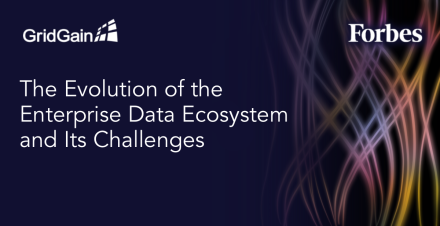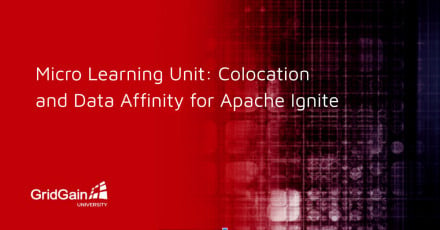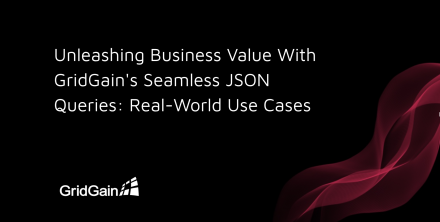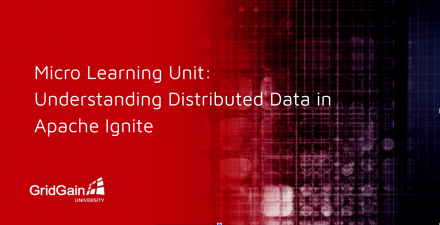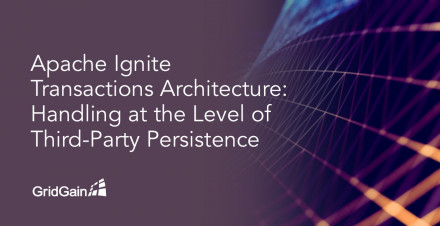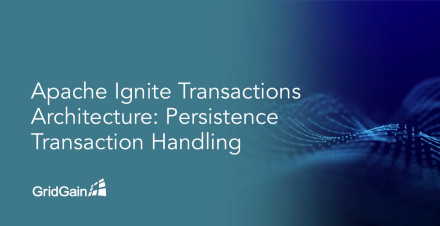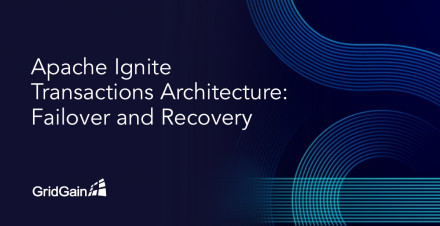GridGain Blog
In his 2005 book, The World is Flat: A Brief History of the Twenty-First Century, Thomas Friedman talked about globalization and a level playing field. Globalization, fading geographical boundaries, and increasing economic dependencies between countries and companies have increased the influence of and dependencies on global information for enterprises worldwide. Global information, characterized…
This eight-minute GridGain University Micro Learning Unit explores the importance of colocation and affinity to the performance of Apache Ignite data query and computation.
The two largest sources of latency in any distributed system are network latency and disk access. In traditional client server applications, data is constantly moved over the network, and it's usually accessed from…
In today's fast-paced business environment, it’s crucial to gain a competitive edge by quickly extracting meaningful insights from diverse datasets. It is also vitally important to be responsive to changing data as soon as possible. These requirements demand a data solution that is flexible and performant. JSON (JavaScript Object Notation) data format, which supports unstructured or semi-…
Welcome to part two of our blog series on “Understanding Then Optimizing GridGain Query Processing.” To properly understand this second blog, it’s highly recommended that you familiarize yourself with the background material that was shared in the first blog post of this two-part series. With the requisite background in place, we can now explore how to overcome the limitations of standard…
IntroductionIn this two-part blog post, we will first explore and understand the major steps that are executed by GridGain’s SQL query processing engine. More importantly, we will share how data is exchanged in the above process and learn about certain limitations that exist within this process. After learning the basics in part one, we will then explore how to overcome those limitations in…
GridGain is happy to announce that we have released our latest Micro Learning Unit, a 10-minute, hands-on training course on how to execute Your First Queries With Apache Ignite.In 10 minutes, we take you through writing your first queries using the three techniques of standard SQL, SQL via Java APIs, and Ignite’s KeyValue pair API.This course is designed for you to follow along. Don’t worry…
This six-minute Micro Learning Unit explores how distributed data is implemented in Apache Ignite and identifies solutions to three key data challenges: hardware capacity, hardware reliability, and performance issues.
Capacity: It’s more efficient to scale data capacity horizontally than vertically. For example, extremely fast CPUs typically cost several times as much as two slightly slower…
Focusing on how Apache Ignite handles transactions with third-party persistence, this article is the last part of the Apache Ignite Transactions Architecture series.
In the previous articles in this series, we discussed a range of topics associated with Apache Ignite's transactions handling in its Key-Value API.
In the first article, we briefly reviewed the two-phase commit protocol and…
In this article, we will be discussing transaction handling at the level of Ignite persistence.
In the previous article in this series, we looked at failover and recovery. Here are topics we will cover in the rest of this series:
Transaction handling at the level of Ignite persistence (WAL, checkpointing, and more)
Transaction handling at the level of 3rd party persistence.
Those…
In this article, we will focus on how Apache Ignite handles failover and recovery during transaction execution.
In the previous article in this series, we looked at concurrency modes and isolation levels. Here are topics we will cover in
the rest of this series:
Failover and recovery [this article]
Transaction handling at the level of Ignite persistence (WAL, checkpointing, and more)…

